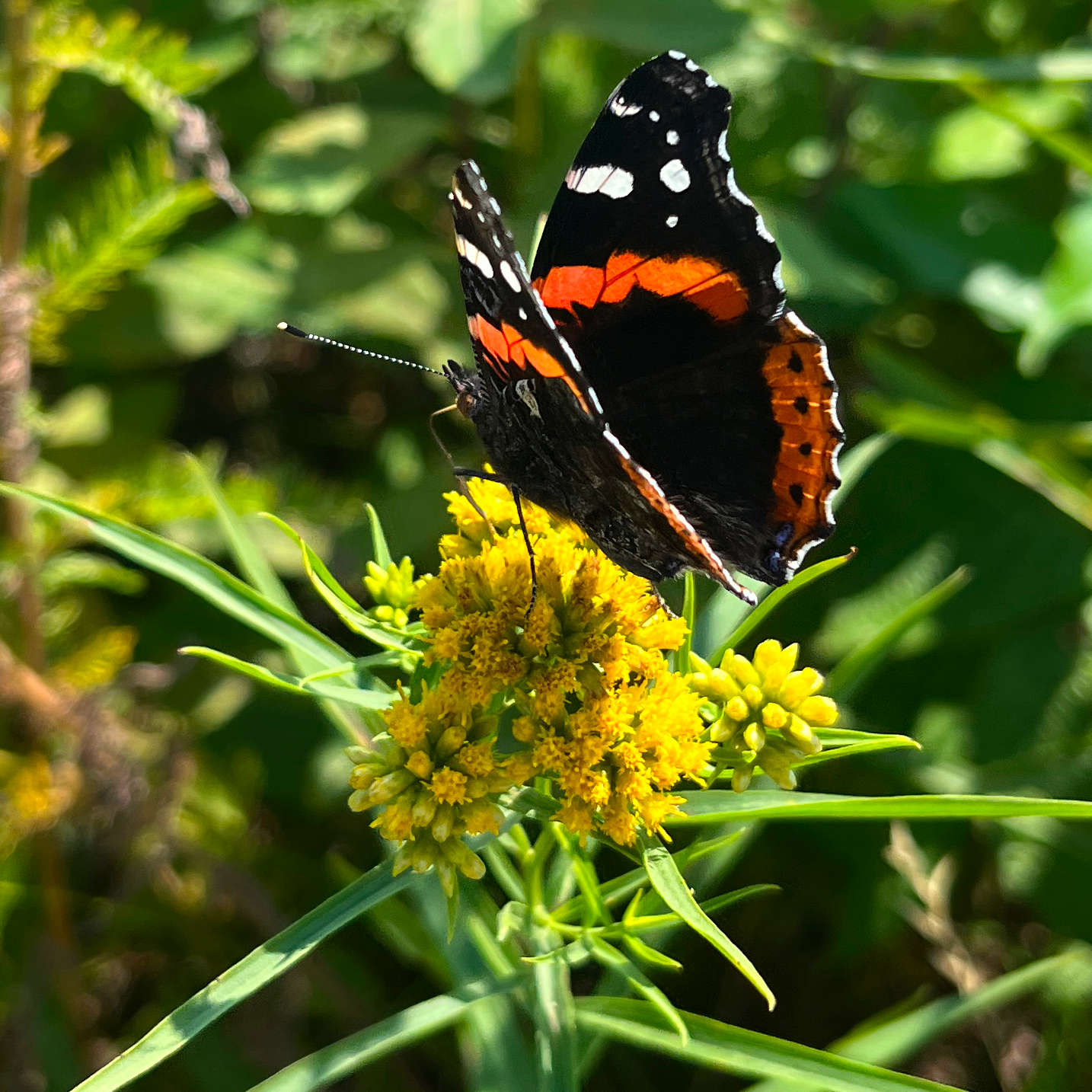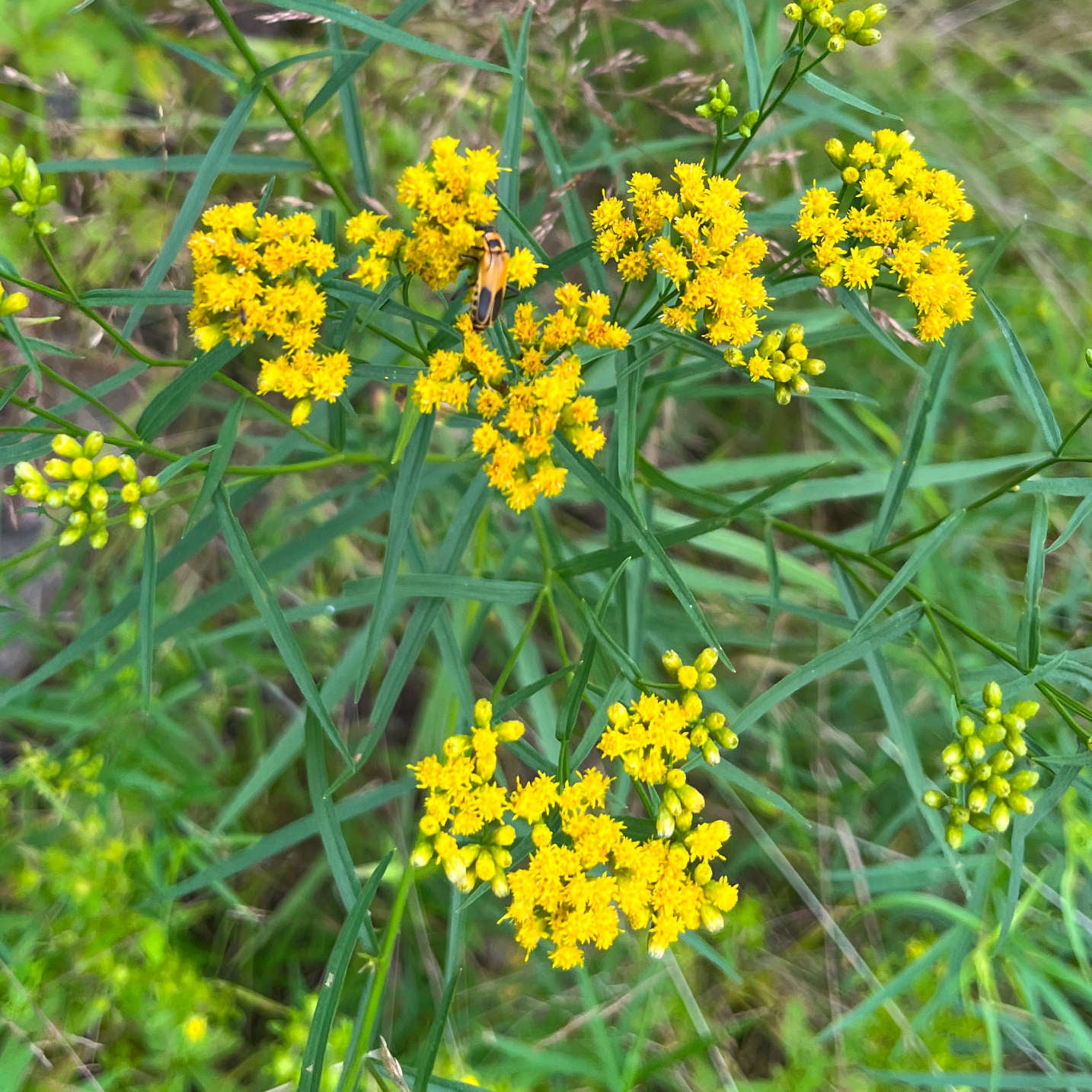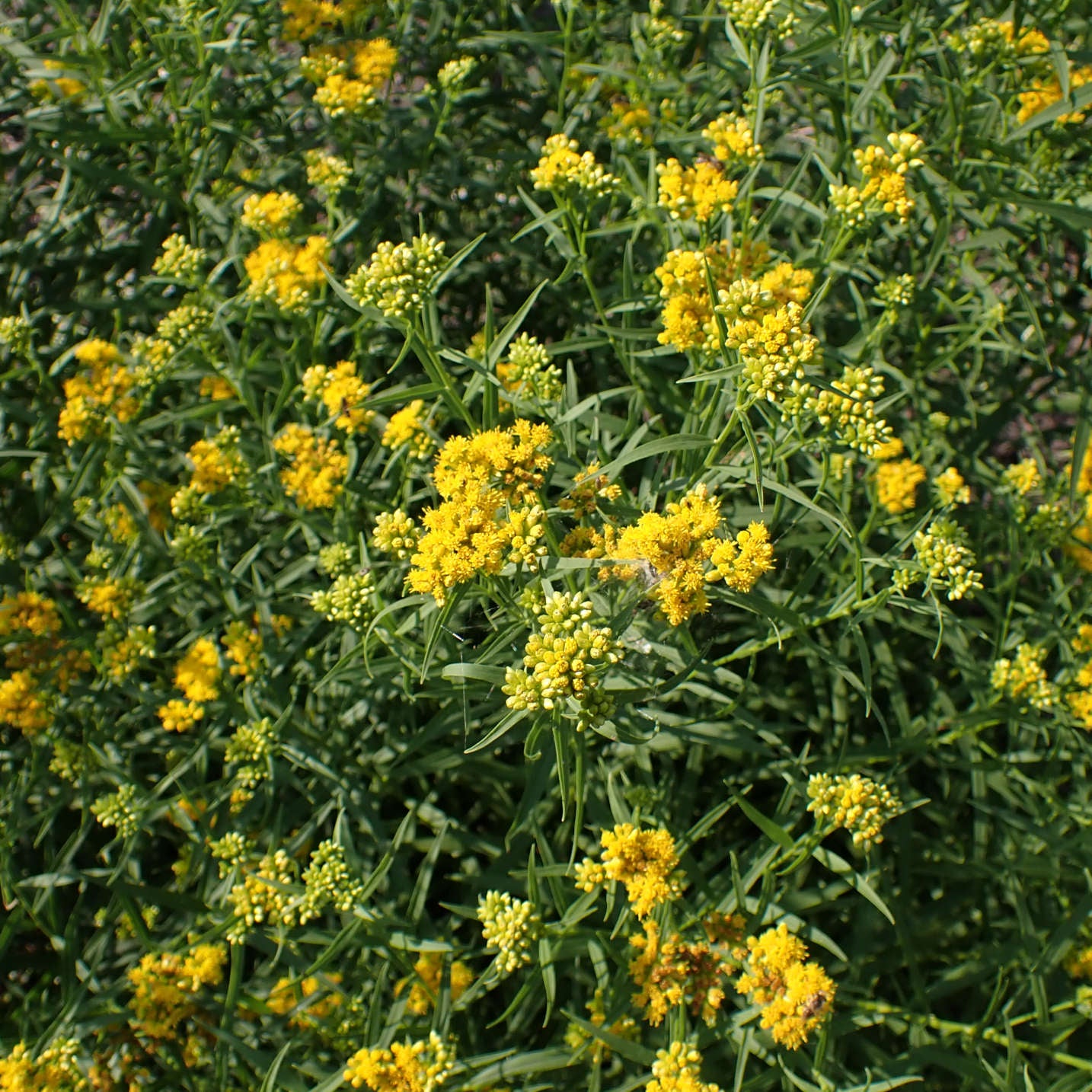For successful seedlings,
see the growing notes at the bottom of the page!
Grass-leaved goldenrod (Euthamia graminifolia) is an upright perennial plant named for its narrow leaves that resemble grass, which are arranged along its stems. At its upper part, it branches into several stems that bear dense clusters of small yellow flowers. This bright flowering, which extends from late summer to early fall, is very attractive to pollinators. While easy to cultivate, grass-leaved goldenrod can become aggressive and invasive, making it less suitable for small spaces.
Medicinal and Culinary Uses
Grass-leaved goldenrod has astringent, diuretic, and antiseptic properties. Traditionally, its leaves and stems are infused to create a herbal tea that helps relieve urinary conditions and mild inflammations.
Ecological Roles
Grass-leaved goldenrod plays an important ecological role by attracting a variety of pollinators, including bees, butterflies, and other insects that feed on its nectar. Its presence in wet environments promotes biodiversity and contributes to these habitats ecological balance. When cultivated in natural gardens or used to stabilize wet soils, it adds a touch of colour while supporting local ecological interactions. Like other plants in the Solidago genus, it is a keystone species for biodiversity.
Grass-leaved goldenrod seeds benefit from cold stratification to ensure germination. See the cultivation notes below for more details.
Akène cannot assume any responsibility for the use of plants for therapeutic purposes. Always seek advice from a professional before using a medicinal or edible plant.
Sowing and Growing
Technical Details
Seeds per packet: 250
Family: Asteraceae
Scientific name: Euthamia graminifolia
Life cycle:
Hardiness zone: 3
Soil type: Sandy to loamy
Soil moisture level: Dry to medium
Soil - additional attributes: Well-drained
Light: Sun, part shade
Blooming: July to September
Spacing: 30 cm
Height: 100 cm
Deer resistance: Moderate
Stratification: 30 days (optional)
Scarification: No
Germination time: 10 to 20 days
Sowing depth: Surface




